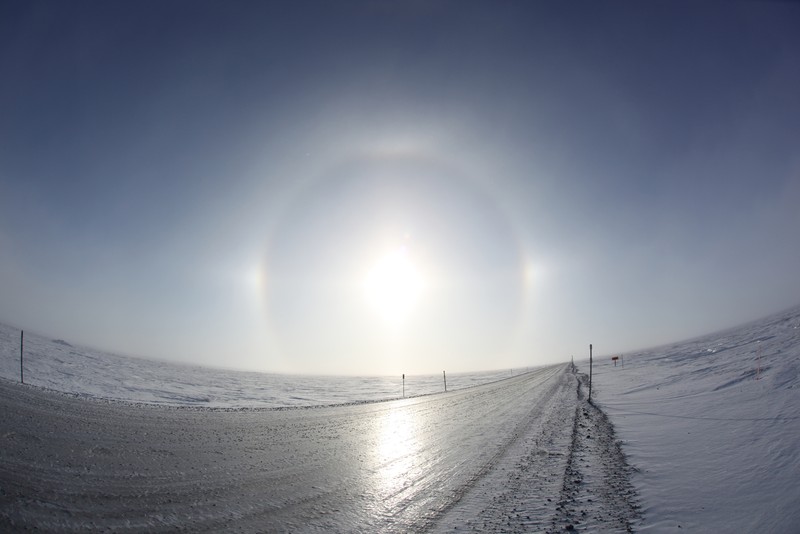
Sundogs in tundra along a trans-Alaska pipeline, during mid-winter by Yongwon Kim, distributed by EGU under a Creative Commons licence.
The northern part of the US state of Alaska is tundra, an area where freezing-cold temperatures hinder tree growth. The result is an unobstructed view of the rising or setting sun that allows photographers to beautifully capture our star. It was in this treeless area that Yongwon Kim, a researcher from the University of Alaska Fairbanks, took this stunning photo of an eerie sun in 2010.Sundogs, atmospheric phenomena also known as parhelia, are more striking and best viewed when the sun is low. As seen in the picture, they appear as bright spots of light, like phantom suns, to the left and the right of our star, often accompanied by a luminous halo with a radius of 22 degrees. These phenomena are caused by the reflection of sunlight on ice crystals in the atmosphere, typically in cirrus clouds.
But the stunning views of the sky hardly make up for the harsh conditions some scientists endure during their research trips. “I took the photo 50 km south of Deadhorse, Alaska during a winter field observation. The temperature was only 32 degrees Celsius below zero at the time,” Kim said.
Imaggeo is the online open access geosciences image repository of the European Geosciences Union. Every geoscientist who is an amateur photographer (but also other people) can submit their images to this repository. Being open access, it can be used by scientists for their presentations or publications as well as by the press. If you submit your images to imaggeo, you retain full rights of use, since they are licenced and distributed by EGU under a Creative Commons licence.

Bárbara Ferreira was the Media and Communications Manager of the European Geosciences Union from 2011 to 2019. Bárbara has also worked as a science writer specialising in astrophysics and space sciences, producing articles for the European Space Agency and others on a freelance basis. She has a PhD in astrophysics from the University of Cambridge.

